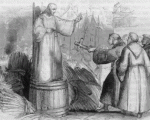
On this day in history, 30th April 1532, in the reign of King Henry VIII, lawyer James Bainham was burned at Smithfield.
Bainham was married to the widow of reformer Simon Fish, a man who had also been charged with heresy…
[Read More...]
On this day in history, 30th April 1532, in the reign of King Henry VIII, lawyer James Bainham was burned at Smithfield.
Bainham was married to the widow of reformer Simon Fish, a man who had also been charged with heresy…
[Read More...]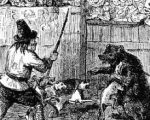
This week’s quiz is a general Tudor history quiz and is the perfect way to start your Sunday. Good luck and have fun!
[Read More...]
Thank you to Teri Fitzgerald for letting me know about this history festival which is taking place from 7th to 9th July 2017 on the Wimpole Estate near Cambridge, in the UK, and has been organised by the Cambridge Literary Festival and the National Trust.
[Read More...]
In this week’s Claire Chats, Claire talks about the breeds and categories of dogs that were common in Tudor times.
[Read More...]
On 28th April 1603, Queen Elizabeth I’s funeral took place in London.
After her death on 24th March 1603, the body of Queen Elizabeth I was placed inside a lead coffin and carried by night in a torchlit barge along the Thames from Richmond Palace to Whitehall.
[Read More...]
Here’s the full edition of our giant 90-page May edition of Tudor Life Magazine. It’s a macabre subject this month … DEATH.
[Read More...]
25th April is the feast day of St Mark the Evangelist, one of the apostles and the man said to have written the Gospel of Mark. He is known as the founder of Christianity in Alexandria, where a church was founded in his name, and as the founder of the Coptic Orthodox Church. As a result of his Christian work in Alexandria and his attacks on the worship of idols, at Easter 68AD he was dragged through the city by a rope around his neck before being imprisoned, where he is said to have had visions assuring him of eternal life. The next day he was dragged until his head parted from his body. Some say he was tied to a horse’s tail.
[Read More...]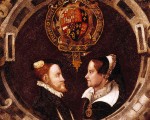
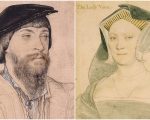
On this day in history, 25th April 1509, the poet Thomas Vaux, 2nd Baron Vaux, was born. He was a son of courtier and soldier Nicholas Vaux, 1st Baron Vaux of Harrowden, and his wife Anne Green.
Thomas Vaux was just fourteen when he married Elizabeth Cheyne, daughter of Sir Thomas Cheyne and Anne Parr, in 1523. The couple went on to have four children, two sons and two daughters.
Nothing is known of his early life and education, but in 1527 he went to France as part of Cardinal Wolsey’s retinue, in 1529 he sat in Parliament and in 1532 he was part of Henry VIII and Anne Boleyn’s party when they travelled to Calais to meet Francis I. He was created a Knight of the Bath as part of the celebrations for Anne Boleyn’s coronation in 1533 and he held the office of Governor of Jersey from January to August 1536. His Oxford Dictionary of National Biography biographer, H. R. Woudhuysen, notes that he appears to have retired to his estates in Northamptonshire after this, probably because of his Catholic views.
[Read More...]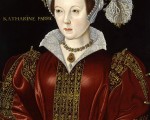
On this day in history, 25th April 1544, Queen Catherine Parr, sixth wife of King Henry VIII, had her English translation of Bishop John Fisher’s Latin Psalmi seu Precationes (Psalms or Prayers) published anonymously by Thomas Berthelet, the King’s printer.
[Read More...]
St Mark’s Eve was all about divining the future, although what on earth that has to do with St Mark is anyone’s guess!
In Folklore of Lincolnshire, Susanna O’Neill writes of how this was the night for young women to “divine who they were to marry”. Ladies in North Kelsey would visit the Maiden Well, “walking towards it backwards and then circling it three times, still backwards, whilst wishing to see their destined husbands. After the third circling, the girl would kneel and gaze into the spring, where she would supposedly see the face of her lover.”
[Read More...]
On this day in history…
24th April:
1536 – Commissions of oyer and terminer set up by Thomas Audley, Lord Chancellor. These particular commissions were for offences committed in the counties of Middlesex and Kent, and covered the crimes of misprision, treason, rebellion, felonies, murder, homicide, rioting, plotting, insurrection, extortion, oppression, contempt, concealment, ignorance, negligence, falsities, deception, conspiracy and being an accessory to these crimes. It is not known whether they were set up specifically to try the men who would later be charged with committing adultery with Queen Anne Boleyn.
1545 – Baptism of Henry Wriothesley, 2nd Earl of Southampton, at St Andrews, Holborn. He was the son of Thomas Wriothesley, 1st Earl of Southampton and 1st Baron Wriothesley, Henry VIII’s Lord Chancellor.
1549 – Death of Ralph Neville, 4th Earl of Westmorland, English peer, soldier and Privy Councillor. He was buried at Staindrop in County Durham. Neville was one of the peers who sat in judgement on Anne Boleyn in May 1536 and served Henry VIII as a soldier in the North of England and borders, and Edward VI in Scotland.
1551 – Execution of Dutchman George van Parris, surgeon and religious radical at Smithfield. He was burned at the stake for Arianism (denying the divinity of Christ).

To commemorate William Shakespeare’s death on this day in 1616, and also possibly his birth in 1564, I’ve devised this wordsearch for you to puzzle over and enjoy. Be warned, the words can go any way – across, down, backwards, diagonally… Have fun!
[Read More...]
Just to let you know that this month’s expert live chat will be taking place on 29th April at 11pm UK time
[Read More...]
Sunday is the anniversary of the death of William Shakespeare in 1616 and possibly his birth in 1564, so is seems fitting for Claire to do a talk on him and to also share other resources on the Bard.
[Read More...]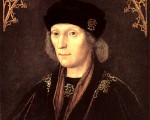
At 11 o’clock on the night of 21st April 1509, King Henry VII died at Richmond Palace. It was not a sudden death, the king had been ill for some time and had shut himself away at Richmond since January.
John Fisher, the future Bishop of Rochester, recorded details of Henry VII’s last days for a sermon. The king died a good Christian death but his last days were far from peaceful, they involved confession, prayer, weeping and a dying man trying to bargain with God, pleading with God that he would be a changed man if God sent him life. Fisher writes of how he received the sacrament of penance “with a marvellous compassion and flow of tears, that at some time he wept and sobbed by the space of three quarters of an hour.”
[Read More...]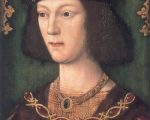
On the 21st April 1509, following the death of his father, Henry VII, seventeen-year-old Henry VIII became king. His accession was greeted with joy. The Spanish envoy Gutierre Gómez de Fuensalida wrote that “The people are very happy and few tears are being shed for Henry VII. Instead, people are as joyful as if they had been released from prison” and William, Lord Mountjoy, wrote to Desiderius Erasmus, the renowned humanist and scholar, saying:
[Read More...]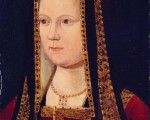
“Why did I limit myself to 60 seconds?” I keep asking myself! It’s so tricky to do any justice at all to these Tudor people in that time, but I hope that these videos do give people enough basic information to make them want to find out more.
[Read More...]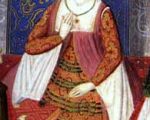
Thank you to regular contributor Heather R. Darsie for writing this introduction to the women of the House of Trastámara.
When thinking about the important players of the Renaissance, particularly during the reign of Henry VIII of England, one recalls the powerful families of the English Tudors, French Valois, and Burgundian Habsburgs. The family that is even more influential, even if quietly, is the overlooked Trastámaras of Spain. This family married into the Tudor, Valois, and Habsburg families, among others, and its reach was far. Who were they?
[Read More...]
On this day in history, Tuesday 19th April 1558, fifteen-year-old Mary, Queen of Scots, became betrothed to fourteen-year-old Francis, the dauphin of France, the future Francis II.
[Read More...]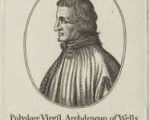
On this day in history, 18th April 1555, Polidoro Virgili (Polydore Vergil or Virgil), the Italian humanist scholar and historian, died at Urbino. He was buried in the Chapel of St Andrew in the Duomo in Urbino. Virgil has been called the “Father of English History”, and his famous works include De inventoribus rerum and the Anglica Historia.
[Read More...]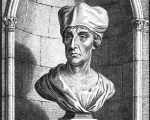
Today is the anniversary of the death of John Leland, the Tudor poet and antiquary, on 18th April 1552. He died in the parish of St Michael le Querne, Cheapside, London, and was buried there. In 1547, Leland “fell besides his wits” and in 1551, his brother was granted custody of him and his possessions. Leland is known for the notebooks of his travels around England and Wales, which were published as “The Itinerary of John Leland the Antiquary” by Thomas Hearne.
[Read More...]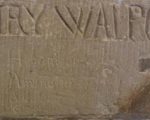
On this day in history, 17th April 1595, Henry Walpole, the Jesuit martyr, was hanged, drawn and quartered in the city of York. Walpole had been accused of treason on three counts: that he “had abjured the realm without licence; that he had received holy orders overseas; and that he had returned to England as a Jesuit priest to exercise his priestly functions”. Walpole was beatified in 1929 and canonised in 1970 by Pope Paul VI.
[Read More...]
17th April:
1534 – Sir Thomas More, Henry VIII’s Lord Chancellor, was sent to the Tower of London after refusing to swear the “Oath of Succession”.
1554 – Sir Nicholas Throckmorton was acquitted of treason for being involved in Wyatt’s Rebellion. The jurors were arrested straight after the trial and Throckmorton remained in prison until January 1555.
1554 – Thomas Wyatt the Younger’s head was stolen in the rejoicing after Throckmorton’s acquittal.

In Tudor times, on Easter Sunday, the candles in the church and around the Easter sepulchre were extinguished, and then the church lights were re-lit by the priest, from a fire. The sepulchre was opened, and Christ’s resurrection was celebrated with a special mass.
[Read More...]
This week’s Sunday quiz is an Easter-themed crossword. I’ve done it as a 2-page printable PDF but don’t look at the second page as it’s the solution!
[Read More...]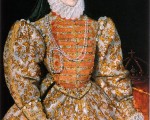
I know that many of you enjoy our informal live chat sessions where we all discuss a certain topic or person, so I thought I’d schedule one for Saturday 22nd April. The topic for this one is going to be Elizabeth I. I know that’s a very broad topic but I’m happy to schedule further more specific chats on aspects of her life and reign as follow-ups to this one. Let’s go broad this time.
[Read More...]
In this week’s Claire Chats video, Claire gives some tips on how to go about researching specific Tudor people and what sources you can use.
[Read More...]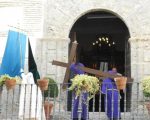
Today is Good Friday and I will miss the procession in my village today because we’re off to see the Passion play in another village, but I know that some of you enjoy the photos I share of feast days and processions here so I thought I’d share these photos from a few years ago.
[Read More...]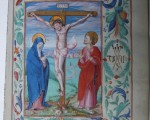
Today is Good Friday, the day that commemorates the crucifixion of Jesus Christ, so I’d like to share the Claire Chats video I made last year on how Good Friday was marked in Tudor times. I’m also reposting the information I shared with it.
[Read More...]